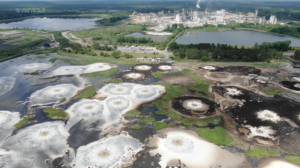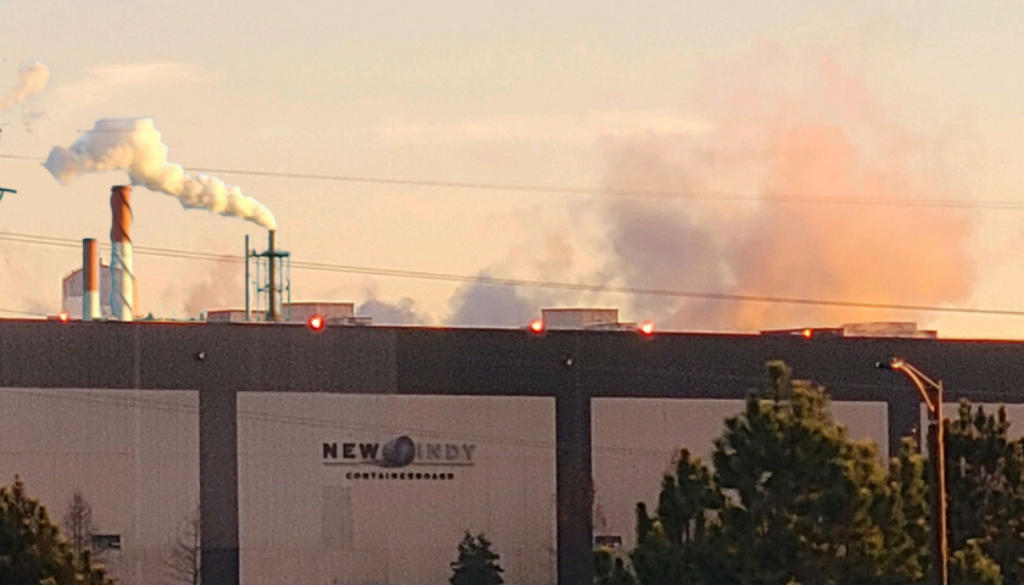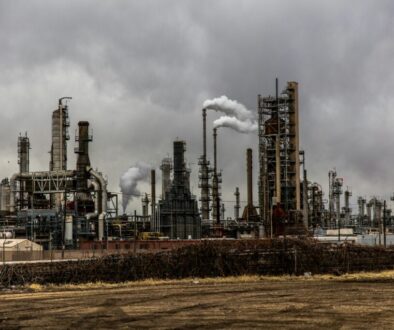In South Carolina, residents battle paper mill pollution and say EPA falling short
By Carey Gillam and Demetria Dickinson
A group of residents who say they are “prisoners” in their homes because of ongoing pollution from a South Carolina paper mill will have their complaints aired in federal court on Wednesday as the mill seeks to dismiss their class action lawsuit.
Two North Carolina and eight South Carolina residents, all living within a range of 2-1/2 to roughly 14 miles from the paper mill, are the named plaintiffs in the lawsuit. They blame the mill for alleged “egregious and wrongful emission of foul and harmful hydrogen sulfide, methyl mercaptan, methanol, and other pollutants and contaminants to the air,” along with discharging “inadequately treated wastewater” into the Catawba River.
They are asking the court to stop the plant from continuing to release the pollutants. The complaint includes data and reports showing that state regulators and federal regulators ordered the plant to clean up its operations more than a year ago. The finalization of a consent decree is still pending, however.
The pollution stemming from operations at New-Indy Catawba LLC in Catawba, South Carolina affects potentially more than one million people who live and work in the region, according to the complaint, filed in the U.S. District Court of South Carolina.
New-Indy has filed a motion to dismiss the lawsuit, claiming the plaintiffs have failed to state any valid legal claims, and objecting to the plaintiffs’ request to certify an “absurdly broad” 1,250-square-mile class of homeowners.
The June 1 hearing will take up the motion to dismiss.
New Indy is controlled by the Kraft Group, LLC, which was founded by New England Patriots owner Robert Kraft.
“The plant has consistently tried to play down [the emissions] and tried to mask it in different ways,” said David Koyle, who lives about five miles from the plant. “The plant is a clear and present danger, and needs to be shut down.”

Health concerns
More than 20,000 complaints have been recorded by state regulators and the Environmental Protection Agency (EPA) since New-Indy purchased the mill in late 2018 and converted the facility from producing bleached paper into a plant producing brown paper for containerboard.
People living within miles of the plant say they can’t go outside due to the strong odors and their health and their property values are threatened.
“I get headaches. Sometimes I get dizzy,” said critic Kerri Bishop, who lives in Rock Hill, South Carolina, just about seven miles northwest of the New-Indy plant.
Bishop runs social media accounts for a local group called Carolinians United, formed to unite community members concerned about the mill. The Facebook group has nearly 4,000 members.
The hydrogen sulfide emitted from the plant carries a noxious “rotten egg” smell that keeps many residents inside their homes with windows and doors closed tight. The chemicals trigger headaches, bloody noses, nausea and other problems, according to the complaints. Many residents worry about longer-term impacts on their health, in particular, on what the inhalation of the chemicals might do to their children.
Several area residents recorded their complaints in a 20-minute video shared online.
“We’re being hit strongly, strongly hit with pollutants that are… causing problems with our health,” said resident Lucinda Swatzell in the video. Swatzell said she lives less than two miles from the mill.
“On certain days, we’re actually prisoners in our own home,” resident Alan Snaider, who lives roughly four miles from the mill, said in the video.
Lawyers representing the plaintiffs say an investigation of the plant’s practices shows it is not properly monitoring air emissions, including for methyl mercaptan, a toxic air pollutant. New-Indy’s sources of air emissions also include other harmful compounds that include dimethyl sulfide and dimethyl disulfide, they say.
Regulatory moves
The efforts by residents to get court action on New-Indy comes more than a year after the South Carolina Department of Health and Environmental Control (DHEC) and the EPA both identified problems at the plant.
In May 2021, the EPA issued an emergency order citing New-Indy Catawba LLC, which does business as New-Indy Containerboard, for violating the Clean Air Act and the Clean Water Act. The EPA ordered mitigation measures, including a demand that the plant reduce emissions of hydrogen sulfide to meet specific limits and ordered the company to perform air monitoring in the communities surrounding the facility.
In a statement issued in May 2021, New-Indy manager Tony Hobson said the plant was taking steps to resolve the issues and was striving to “be a good member of the community.”
“We are committed to the safety of our 420 local employees and the surrounding area; protecting the environment; promoting economic vitality; and charitable giving to support great local causes,” Hobson said in the statement.
Despite the assurances, in July of last year the EPA filed a formal complaint against New-Indy, alleging that emissions of “high levels” of hydrogen sulfide from the facility were “causing an imminent and substantial endangerment to public health or welfare or the environment.”
The EPA then filed a proposed consent decree with New-Indy in federal court on Dec. 30, 2021. The decree, which is still pending approval, would fine New-Indy $1.1 million, require the plant to properly process wastewater and waste gasses to minimize pollution, and require hydrogen sulfide monitors on the plant’s fence lines.
Critics of the consent decree say it does not go far enough, however, to truly protect public and environmental health.
South Carolina state legislator Michael Johnson earlier this year wrote a letter to the U.S. Department of Justice urging the EPA to “reconsider” the consent decree, because it “falls short of providing the necessary protections to the people surrounding the plant.” He laid out multiple additional provisions he and other critics say are needed.
New-Indy Catawba’s website details the actions they have taken to address the pollution. According to their timeline, they restarted the steam stripper in May 2021 and installed additional equipment into the wastewater treatment lagoons. The lagoons have been dredged periodically throughout 2021. A hydrogen peroxide treatment has been added to the foul condensate pipe. Daily reports detail the below-limit results of their hydrogen sulfide monitors. Despite this, residents continue to report odor and health complaints.
New-Indy Catawba did not immediately respond to an email requesting comment.
 EWG
EWG


